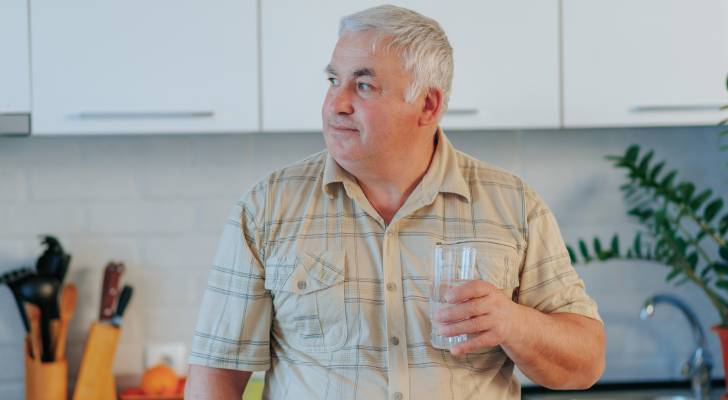For generations, buying a home has been stitched into the fabric of the American dream like Betsy Ross stitching stars onto the first flag of the nation.
It’s more than just four walls and a roof — it represents stability, independence and the financial security people hope will compound with time.
Must Read
- Thanks to Jeff Bezos, you can now become a landlord for as little as $100 — and no, you don’t have to deal with tenants or fix freezers. Here’s how
- I’m 49 years old and have nothing saved for retirement — what should I do? Don’t panic. Here are 6 of the easiest ways you can catch up (and fast)
- Dave Ramsey warns nearly 50% of Americans are making 1 big Social Security mistake — here’s what it is and 3 simple steps to fix it ASAP
It’s long been seen as an investment: pay down the mortgage, build equity and one day you’ll have a resource that will be the foundation of your wealth. That belief is still alive and well. A recent Realtor.com survey found nearly three in four Americans still see homeownership as central to the dream, and 59% believe it’s achievable. (1)
But it begs the question: achievable at what cost? In an exclusive interview with Moneywise coinciding with the release of his new book, The Art of Spending Money, New York Times bestselling author Morgan Housel made it clear that while he still considers a home part of the dream, today’s buyers face more obstacles than ever.
“The danger … is for people who say housing is so important … that even if it costs an exorbitant amount, we’re going to do it. We’re going to go into buckets of debt. We’re going to spend half of our income on a mortgage payment,” Housel warned.
Americans are willing to take on substantial debt in order to make their dream come true. But when debt on that scale becomes the norm, it doesn’t just strain individual finances — it reshapes society.
Here’s a closer look at what’s really at stake.
Want the full Morgan Housel conversation? Subscribe to our mailing list to watch all our latest interviews before anyone else.
Priced out of parenthood
Housel admitted that many young people will want to check off certain boxes before starting a family, and one of those boxes is homeownership.
The latest data from the U.S. Centers for Disease Control and Prevention (CDC) shows the nation’s fertility rate has fallen to fewer than 1.6 births per woman. That is down from the 2.1 births per woman recorded in 2006, the rate needed to sustain the population. Over that same stretch, the financial burden of homeownership has only grown. (3)
The median price of a single-family home in 2006 was the inflation-adjusted equivalent of $343,806. By 2024, that number had climbed to $410,100 — a $66,000 increase.
“It is such a cornerstone of building your adult life. But then you get into all kinds of financial problems,” Housel says. “If you asked me what the biggest social problems are in the United States, Canada and the U.K., I would be hard pressed to come up with many more that are bigger than housing.”
Experts say cultural shifts have already pushed many women to delay having children or decide against parenthood altogether, but economic pressures like housing are making the decision even starker. For many Americans, the dream of homeownership now collides directly with the decision to start a family, forcing a choice between financial security and raising children.
In their paper House Prices and Birth Rates: The Impact of the Real Estate Market on the Decision to Have a Baby, economists Lisa Dettling and Melissa Schettini Kearney found that a 10% rise in home prices correlates with a 1% drop in births among non-homeowners in an average metro area. (4)
Read more: Robert Kiyosaki warns of a ‘Greater Depression’ coming to the US — with millions of Americans going poor. But he says these 2 ‘easy-money’ assets will bring in ‘great wealth’. How to get in now
Policy isn’t helping
The barriers facing first-time buyers aren’t just about demand — policy plays a role, too. Nobel Prize-winning economist Paul Krugman argues that even non-housing policies are weighing on the market. (5) Tariffs on key construction imports, for example, risk discouraging new building at a time when affordability is already slipping out of reach.
Housing costs have been rising far faster than household incomes, and Krugman points to one major culprit: a slowdown in homebuilding. His solution is to increase supply by building more multifamily housing and embracing density.
Housel echoes that idea, saying that the reason housing is so expensive is that we don’t build enough of it.
If you’re a buyer looking to get into the market, it’s important to remember not to stretch yourself too thin. Homeownership is meant to be a foundation, not a financial burden. If affording a house means maxing out your budget or locking in half of your paycheck into a mortgage, then the dream can quickly start to feel like a nightmare.
That doesn’t mean giving up on the goal entirely. A home is still an effective and financially sound way to build wealth, as well as meet the basic human need for shelter. (6) But the pursuit of that investment shouldn’t come at the cost of your financial well-being.
Sometimes the smartest move is renting just a little longer, scaling down your expectations or simply waiting until the numbers work in your favor. That kind of patience can protect you from the debt that lingers for decades and weighs down every other part of your life.
What to read next
- How much cash do you plan to keep on hand after you retire? Here are 3 of the biggest reasons you’ll need a substantial stash of savings in retirement
- There’s still a 35% chance of a recession hitting the American economy this year — protect your retirement savings with these 5 essential money moves ASAP
- This tiny hot Costco item has skyrocketed 74% in price in under 2 years — but now the retail giant is restricting purchase. Here’s how to buy the coveted asset in bulk
- Want an extra $1,300,000 when you retire? Dave Ramsey says this 7-step plan ‘works every single time’ to kill debt, get rich in America — and that ‘anyone’ can do it
Join 200,000+ readers and get Moneywise’s best stories and exclusive interviews first — clear insights curated and delivered weekly. Subscribe now.
Article sources
We rely only on vetted sources and credible third-party reporting. For details, see our editorial ethics and guidelines.
Realtor (1, (2); National Center for Health Statistics (3); National Bureau of Economic Research (4); Newsweek (5); Entrepreneur (6).
This article provides information only and should not be construed as advice. It is provided without warranty of any kind.

